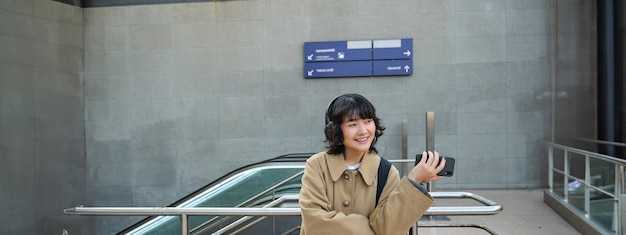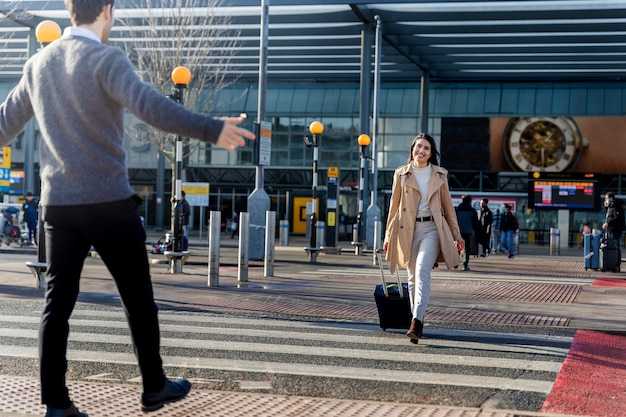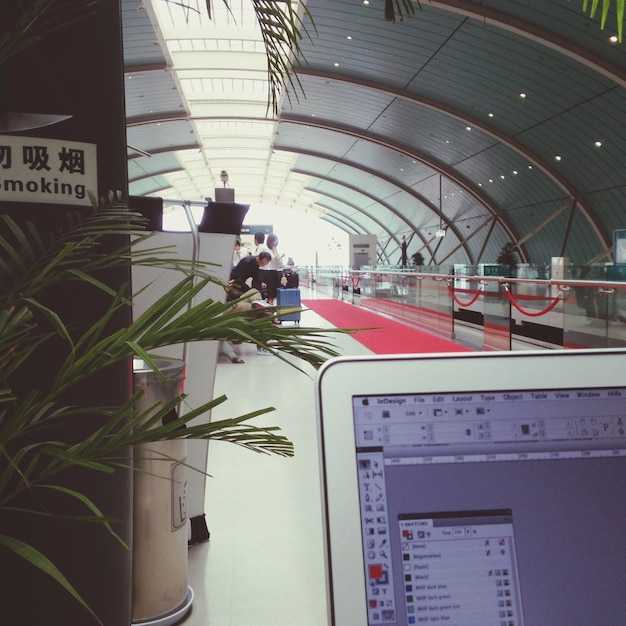Choose a fără probleme transfer privat from Tokyo Haneda to central Tokyo right after you land to start your trip smoothly. The driver waits at the arrivals hall with a sign, your vehicle is clean and climate-controlled, and the price is a fixed rate that covers tolls and luggage. Typical prices range from 12,000 to 25,000 JPY depending on your destination like shibuya or Ginza, with options for English-speaking assistance.
If you prefer to ride with others, consider a regional shuttle or shared ride. It’s cheaper and still predictable, but it’s less flexible during busy times–the busiest windows are morning and late afternoon around holiday periods and weekends. For several stops to major districts, a regional service can still cut transfer time and avoid the hassle of finding a taxi.
Rail options offer speed and reliability: Keikyu Line to Shinagawa and JR Yamanote to shibuya, with trains running every 5–7 minutes outside peak hours. A direct taxi to shibuya takes 25–40 minutes in light traffic; during peak hours you should budget closer to 60 minutes. For couples, a private vehicle keeps your luggage safe and gives you a comfortable start to cruising past neon signs toward a lunch by the river.
Safety matters: choose a licensed operator with clear pricing and cancellation terms. Look for English-speaking drivers if you’re new to Tokyo; many drivers provide tips on local culture and traffic patterns to help you adjust quickly. Booking in advance and receiving a clear pickup time, terminal location, and contact number makes the arrival smoother, and thats why reliability matters for a calm start.
For those who want flexibility, aim for a driver with a larger vehicle that can accommodate several pieces of luggage. On routes toward shibuya, plan a quick lunch stop near the river or in a neighborhood with easy access to the station. Booking ahead gives you a truly fără probleme start, and you’ll avoid the crowds of the busiest transit hours while still enjoying a smooth arrival to your hotel base or event venue.
Tokyo Haneda Airport Transfers – Quick, Safe & Compare Great Vehicle Options For Tokyo Haneda Airport To Yokohama Transfers
Recommended: take the train from Haneda to Yokohama Station via the Keikyu Airport Line. It arrives most quickly, costs roughly 600–800 JPY, and trains are air-conditioned. This option keeps you connected to central Yokohama and helps you navigate after landing, especially for people with luggage. The experience can feel like kintsugi, where simple choices repair the travel experience with reliable pieces.
For door-to-door needs, airporttaxiscom lists top-rated options. These services provide accessible, air-conditioned cars, experienced drivers, and predictable pickups. Prices vary by vehicle type and traffic; during heavy periods, expect higher rates. If you have a hotel or a group, a private transfer can feel simpler and get you back to your hotel quickly. Aren’t all transfers the same? Compare before you book to find the best fit for your needs.
Should your flight be redirected, expect flexible pickup adjustments and real-time updates to ensure you still arrive on time. If you need to claim a refund or modify plans, check the provider’s policy before departure.
Best vehicle options and what to expect

The train remains the most economical choice and typically arrives at Yokohama Station in under 30 minutes. Vehicles are air-conditioned on board, and you can navigate from the platform to your hotel with minimal hassle. For door-to-door convenience, the top-rated airport taxis listed on airporttaxiscom offer accessible service, ideal when you need to carry heavy luggage or travel with relatives.
Onward travel and tips for a smooth stay
From Yokohama, the JR network connects easily to chiba and other destinations, making it simple to extend your trip. The system is highly connected, helping you cover a lot of ground over the day. If you plan a sailing excursion in Tokyo Bay, coordinate timing so you arrive with time to spare. Hotels near terminals are accessible, and you can choose from options that fit your needs, whether you book a private car or use a train. The route you pick depends on your period of stay, early or late arrival, and whether you need flexibility. Not all options are listed the same, so compare and choose the one that best fits your needs and travel plan. Carrying your plans with you can help you back up to a smoother trip.
Vehicle Options Compared: Private Car, Shuttle, Taxi, and Ride‑Share from HND to Yokohama
Recommendation: Book a private car in advance for a predictable fare, privacy, and door‑to‑door service to Yokohama.
For those arriving at HND and heading straight to Yokohama, private car services provide a transparent, fixed fare and a dedicated driver who meets you at arrivals. The latest options include sedans, SUVs, and vans to match group size and luggage. Shuttles offer an economical alternative if you don’t mind a schedule and multiple stops for excursions to Shibuya, Minato Mirai, or Yokohama’s waterfront. According to airport guides, you can compare those options to find a balance between cost and convenience, and youll see how those services work in practice.
At a glance: cost, time, and convenience
- Private car – Pre‑booked. Transparent pricing with a fixed quote, meet‑and‑greet at arrivals, and door‑to‑door service. Typical fare range: 12,000–20,000 JPY depending on vehicle and tolls; travel time 40–60 minutes to central Yokohama. This option covers luggage comfortably and reduces stress during departures or arrivals.
- Shuttle – Shared. Lowest per‑person cost and straightforward booking; ideal for those with flexible timing and a willingness to share the ride. Expect 60–90 minutes door‑to‑door with stops; per‑person fares commonly 1,500–3,000 JPY. Shuttles are helpful for group trips and excursions to wider areas.
- Taxi – Airport taxi. Widely available 24/7; meter fare plus tolls. Typical total: 20,000–25,000+ JPY; travel time 40–60 minutes, depending on traffic. Useful when you depart with heavy luggage or prefer immediate pickup without advance booking. See airporttaxiscom for current listings and tips.
- Ride‑Share – App‑based. Flexible pickup and typically faster during off‑peak hours; prices often 8,000–15,000 JPY depending on demand and surge. Availability to Yokohama is good in urban corridors, but dont rely on it during high demand or extreme weather events.
theres also a practical note: duty‑free shops at HND can be convenient if you buy items after landing before heading to your ride. If a flight is departing late or you dont want to wait, ride‑share can offer a quicker alternative. During disaster or major traffic events, government guidance may redirect shuttles to designated pickup zones, while private cars and ride‑shares can adapt routes to reach your destination more quickly.
Practical tips
- Compare those options before you land using a quick layout to compare fares and times from the latest sources, then start with a preferred option.
- If you plan excursions to Shibuya or Minato Mirai, a private car or ride‑share gives you more control over timing and route work.
- Always start with a booking when traveling with family or a lot of luggage to ensure a smooth transfer, and theres a clear plan for the return leg.
Travel Time Estimates and Peak‑Hour Variations for HND to Yokohama Trips
Recommendation: Take the Keikyu Airport Line from Haneda to Yokohama Station for the fastest, most predictable transfer. Rail time is typically 25–40 minutes, trains run every 5–8 minutes, and you land in Yokohama without the stress of city traffic. If you depart during peak hours, road transfers vary more and can reach 60–90 minutes; in that case, rail stays your best option. If youre arriving with heavy luggage or a tight flight connection, a limousine or private car can assist, but rates rise and you should add extra buffer. Delayed events happen due to weather or maintenance, so check live updates before you head out. If youre parking at HND, verify long‑term parking rates and spaces to avoid last‑minute searches.
Time estimates by mode

| Mode | Typical time (min) | Peak-hour variation (min) | Note |
|---|---|---|---|
| Rail (Keikyu Airport Line to Yokohama Station) | 25–40 | +5–15 | Direct, frequent; japanese rail network; departing from Haneda terminals |
| Taxi | 40–70 | +15–30 | Door-to-door; traffic and tolls apply; parking zone access may speed pickup |
| Limousine (private car) | 50–70 | +15–25 | Premium service; curb pickup; higher rates; please reserve in advance |
| Airport Bus / Limousine Bus | 50–70 | +15–25 | Direct to Yokohama hubs; schedules vary by stops |
| Sailing / Water taxi (scenic option) | 60–120 | +10–25 | Weather dependent; best for leisure days visiting Minato Mirai area |
Practical planning tips
Locate your pickup spot at HND in advance and confirm the terminal you land at; this saves walking and distance. If youre landing in the afternoon, parking rates at the airport can vary by lot and duration, so check the current currency on entry and pay with a card where possible. Beyond your flight, consider dining choices near Yokohama Station or Minato Mirai to stretch time. If you need assistance with travel details, we can assist with route options, flight connections, and land-side transit steps to keep your day on track.
Security Standards and Vetting for Haneda Transfer Providers
Verify licensing, insurance, and driver background checks before booking, then select providers with the latest regulatory approvals and documented risk-control practices. For Haneda transfers, prefer domestic operators or recognized international affiliates with clear credentials.
Implement a thorough vetting flow: require business licenses and operator permits, demand proof of regular vehicle inspections, and confirm driver training in passenger interaction, emergency procedures, and professional conduct. Ensure fleets use GPS tracking, offer child seats on request, and carry adequate insurance coverage across the trip.
When exploring options, compare choices on airporttaxiscom and direct vendor sites. Check for hidden or promotional fees, and ask about any levy or cancellation costs. If storage for luggage is needed, confirm whether it is included. If duties or schedules change, look for alternatives offered by the provider and confirm costs in writing. In peak season, availability can tighten, so plan your pick and arrival details to avoid confusion. tips: verify the pickup point and runway arrival channel to align with your flight.
For domestic operations, verify alignment with Haneda-specific rules and airport procedures, and check how the service works with delays or a change to your schedule. For international affiliates, confirm cross-border credentials and 24/7 back-up support. In all cases, request a written policy on refunds, on-time guarantees, and what happens if you arrive late or your flight is canceled. If a change to your plan occurs, ensure you have a rapid update channel and updated pickup instructions.
Explore a few providers offering tours paired with transfer options, and assess the overall experience you can expect depending on the service level chosen. If you travel with family or a group, check whether child seats and luggage handling are offered as standard and how staff secure belongings and storage at the curb or in the vehicle.
Prețuri transparente: taxe, depozite, anulări și reduceri
Verificați termenii de preț înainte de a rezerva; asigurați-vă că vedeți o detaliere completă a tarifelor de bază, taxelor de distanță, suprataxelor de timp, taxelor de preluare de la aeroport și a oricăror taxe de drum. O detaliere clară facilitează compararea diferitelor opțiuni de călătorie și alegerea celei mai potrivite pentru transferurile dvs. de la Tokyo Haneda. Folosiți hărți pentru a confirma punctele de preluare și opțiunile de traseu și verificați dacă prețul afișat include toate taxele de livrare sau de serviciu.
Tarifele combină o taxă de bază, tarife bazate pe distanță per kilometru și taxe bazate pe timp. Transferurile Haneda pot adăuga o taxă de preluare de la aeroport, taxe de drum și suprataxe pentru bagaje. O limuzină sau un SUV mai mare mărește tariful, dar oferă confort cu aer condiționat și mai mult spațiu de depozitare pentru bagaje. Sistemul ar trebui să prezinte fie un total unic, fie o listă detaliată cu un număr specific de taxe, astfel încât să puteți compara tarifele între diverse vehicule; prețul final apare direct pe cardul călătoriei.
Depozite și anulări: mulți furnizori solicită o preautorizare a cardului de credit sau un mic depozit pentru a garanta cursa. Termenii de anulare variază; unele servicii oferă anulare gratuită cu până la 24 de ore înainte de preluare, altele rețin o taxă dacă se anulează într-o perioadă scurtă de timp. Verificați întotdeauna termenii exacți pe pagina de rezervare și în e-mailul de confirmare și rețineți numărul de ore înainte de preluare în care puteți schimba sau anula.
Reduceri și promoții: căutați reduceri pe bază de cod, avantaje de fidelizare sau oferte combinate. Dacă ați rezervat o călătorie dus-întors sau mai multe călătorii, este posibil să vă calificați pentru reduceri pentru călătorii dus-întors sau pentru mai multe călătorii. Rezervările de grup pot debloca tarife mai mici, iar unii operatori oferă permise de călătorie nelimitate pentru o perioadă stabilită. Pentru plată, verificați dacă sunt acceptate cardurile și dacă este acceptat Google Pay; numerarul poate fi, de asemenea, disponibil în unele cazuri, dar poate afecta opțiunile de rambursare. Confirmați totalul pe confirmare în loc de doar tariful de bază pentru a evita surprize în aventurile dvs.
Păstrează o copie a chitanței; livrarea confirmării și defalcarea tarifului te ajută să urmărești cheltuielile și să împărtășești detalii cu alte persoane în timpul șederii tale. Pentru o claritate suplimentară, notează distanța parcursă și numărul de opriri pentru a compara curse similare în viitor.
Accesibilitate, Capacitate bagaje și Logistică de preluare la Haneda pentru transferuri la Yokohama
Luați Keikyu Express spre Gara Yokohama imediat ce aterizați; este cea mai rapidă rută cu cea mai mică congestie, de obicei 25–30 de minute și trenuri la fiecare 8–12 minute în perioadele aglomerate.
Accesibilitate: Terminalele Haneda oferă deplasare fără trepte de la bordură la șină, cu lifturi și rampe care leagă sosirile de gările. Semnalizarea este multilingvă, iar birourile de informații pot aranja asistență dacă aveți nevoie de suport pentru scaun cu rotile sau de îndrumare către următoarea etapă a călătoriei dumneavoastră. Această configurație fiabilă face ca deplasarea de la locul de sosire al zborului dumneavoastră la linia expres să fie ușoară, chiar și în timpul sosirilor anticipate, când tiparele pot părea rigide.
Capacitate bagaje: Serviciile Express oferă spațiu utilizabil pe podea și zone pentru bagaje la capătul vagonului; de obicei, încap două valize mari plus un bagaj de mână fără a bloca culoarele. În perioadele de vârf de aglomerație, spațiul se poate umple rapid, astfel că pentru trei sau mai multe bagaje, un transfer privat sau un taxi poate reprezenta o opțiune mai confortabilă în timp ce parcurgeți ultima milă până la hotel.
Logistică de preluare: Dacă pre-rezervați un transfer, șoferul vă urmărește zborul și vă întâmpină în sala de sosiri, ținând un semn cu numele dvs. sau cu referința rezervării. Pentru o predare lină, împărtășiți numărul zborului, terminalul și numele hotelului; operatori precum lebrun sau nicolas pot coordona punctul de întâlnire și pot asigura o plimbare rapidă până la mașină. Dacă ajungeți în perioade aglomerate, acordați câteva minute suplimentare pentru vamă și confirmați punctul de preluare în avans prin internet sau prin aplicația de rezervare, pentru a evita discuțiile inutile. Dacă ruta dvs. include opriri spre Nagoya sau zona Fuji, șoferul dvs. poate planifica un traseu direct, cu congestie redusă, care minimizează timpul de așteptare pentru dvs. și ceilalți călători.



Observații